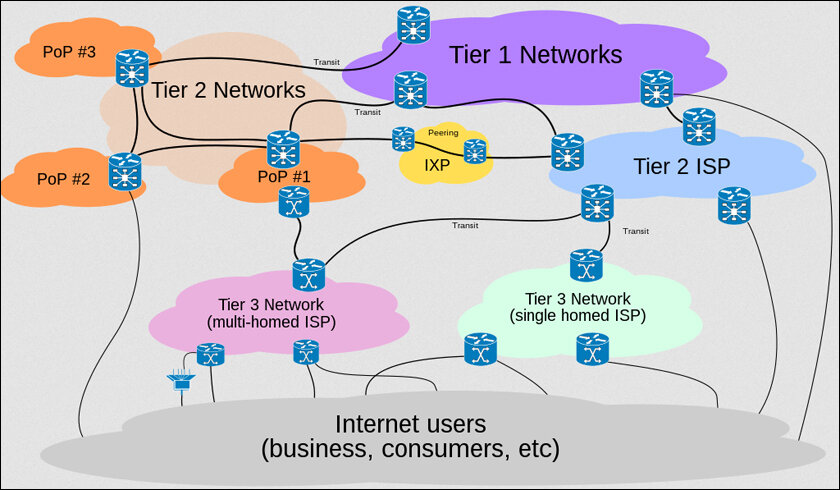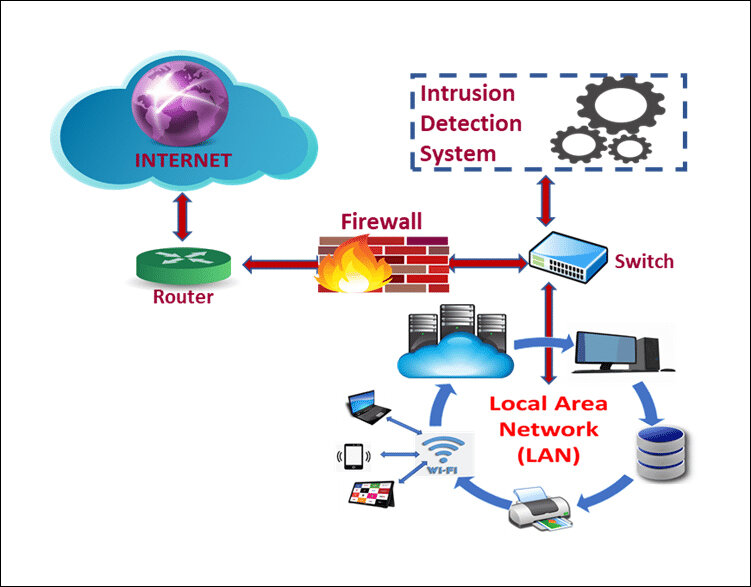Enhancing network performance is one of the most significant ways an organisation can stay ahead of its competition.
When it comes to the business network, efficiency is everything. That’s why enterprise network connectivity has always been important. It’s the infrastructure of multiple elements, including virtual and real networks, on and off-premise data centres, and cloud infrastructure, that allows users to engage with data across many devices and business-critical applications. That said, the costs incurred due to unreliable and slow networks can damage businesses in the long run, hurting the user experience and affecting productivity and output. That’s why having reliable enterprise network connectivity is vital, but looking for alternative solutions for improving peak performance is also important. Here’s a detailed look at how organisations can better enterprise network connectivity in the digitisation age.

Employ Quality of Service Settings
Quality of Service (QoS) helps organisations manage how much bandwidth every part of their network uses, helping it run smoother. It ensures important tasks, like video calls, get enough internet speed to work clearly and well. So, the organisation needs to figure out which tasks are the most important for its network and give them priority.
Adjusting Network Setup
Adjusting network setup can improve network performance significantly. That includes changing the configuration of firewalls, switches, and routers. Guided by network performance data, it’s a smart move for organisations to tweak these settings after regularly reviewing them.
That said, having clear visibility into the enterprise network is critical, which is possible with tools like “Network Visibility.” An organisation can make well-informed adjustments to their network configuration, and they’re also useful for networks having undergone transformations. For instance, when organisations upgrade a device or add one to their IoT by installing a new device, it must be configured correctly. Not doing so will result in network and productivity issues, which is why network visibility is very important. It allows your team to quickly confirm that the changes haven’t negatively impacted network performance.

Network Segmentation
Network segmentation divides it into smaller, specific parts, helping it run more securely and smoothly. Not only does every part get its network resources, but it also translates to less waiting time for the data to reach where it’s going. Moreover, it’s safer as the entire network doesn’t get affected if only one part has a problem. For instance, companies with business guests can release a separate network for visitors. The service resources are maintained separately, and the network can still be accessed. So, when creating network segments, organisations need to consider their business needs and plan accordingly.

Adding Intrusion Detection Systems
In the last few decades, cybersecurity has become one of the most critical business concerns. Organisations have, therefore, developed well-defined and detailed incident response and disaster recovery plans to deal with security breaches. And intrusion detection systems (IDS) are one of the most essential parts of such plans. IDS monitors network traffic and bandwidth for anything odd or out of place and helps stop possible attacks that could disrupt the system. Hence, they can keep the enterprise network running smoothly by catching security threats early. That said, IDS must be updated and adjusted to recognise new types of threats.
Another thing to keep in mind is that ransomware, malware, and viruses are the main culprits that slow networks. So, one of the simplest ways to enhance network performance is to keep it always protected from viruses and malware. Installing anti-malware software and regularly running virus checks is possible to help keep the enterprise network in top shape.
No single piece of technology or security tech can solve all network security needs and issues in an organisation. Here are some cybersecurity strategies organisations can employ.
Updating Network Hardware and Software
As the business grows and expands, more demands and responsibilities are added to the enterprise network. That’s why adding new devices, like switches and routers, to the network can make a massive difference in how well it works. Since the latest devices can generally handle bandwidth better, they also offer better ways to keep traffic flowing smoothly. It increases network redundancy and ensures continuous availability, even during operational disruptions. So, businesses can avoid significant losses during unexpected downtime. So, when an organisation is considering upgrades, it also needs to consider what the enterprise network needs currently and what they might be in the future.
The same goes for network software. If all the software is the best version of it out there, then it significantly increases performance across the entire network.

Optimising Load Balancing and Network Protocols
One of the smartest ways to manage enterprise network traffic is to implement load balancing, which distributes traffic across multiple servers. So, no single server will get overloaded with requests, thus avoiding network performance slowdown performance. Organisations should explore various load balancing methods, like IP-hash and round-robin, to help them find the best fit.
Another vital thing to do is optimising network protocols, which are essential for transmitting data across the enterprise network and can significantly improve network speed and performance.
With 5G and Wi-Fi 7 being touted as the next big thing in enterprise network connectivity, it’s critical to stay up with the needs of the customer and the network itself. Enhancing network performance is one of the most significant ways an organisation can stay ahead of its competition.
In case you missed:
- Enterprise Network Transformation: Benefits and Challenges
- AI and Networking Infrastructure – 2024 Trends
- Cryptography in Network Security – Concepts and Practices
- Six ways hosted private cloud adds value to enterprise business
- Tackling The Most Critical Cloud Security Vulnerabilities
- All About Attack Surface Management
- IoT and its role in energy transition
- Star Topology – Benefits and Challenges
- AI Firewalls and How They Protect Your Data
- Re-examining Cybersecurity through Blockchain









